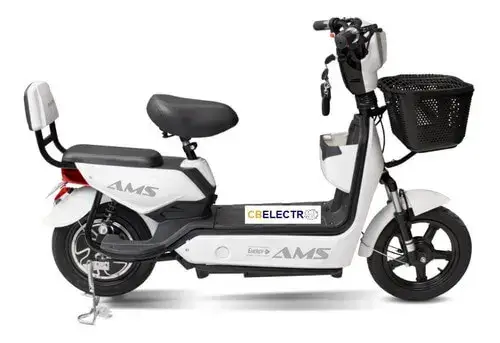How COVID-19 is affecting public transit use
If demand for public transit is an indication, Canadians might be taking the COVID-19 pandemic more seriously than those in other countries, at least according to data released by Transit, a trip-planning app that provides the schedules of transit agencies worldwide.
Based on the company’s calculations, demand for transit in Canadian communities dropped an average of 83 per cent in late March, as calls for physical distancing grew louder, compared to the same period in past years. The average drop for all 106 cities in 11 countries served by the mobile app was 76 per cent. In the U.S., it was 70 per cent.
The changes weren’t uniform across the country. In general, cities in Quebec and Ontario saw the biggest drops, while those B.C. dropped less according to the app, which tracks schedules for 50 transit agencies across Canada in 31 metropolitan areas, covering buses, subways and commuter rail.
Sherbrooke, Que., had seen the biggest drop among Canadian metropolitan areas by Thursday, a whopping 91 per cent.Thunder Bay, Ont. saw the smallest: 70 per cent.
Other countries also saw big drops in transit use, with France seeing the biggest, especially in Lyon (92 per cent) and Nice (85 per cent).
American cities, on the other hand, had some of the lowest decreases, especially in the southern and eastern parts of the country
Seattle was one of the first U.S. cities to report confirmed coronavirus cases, and it appears to show in the data; it was one of the first cities in the country to show a drop in usage. The San Francisco Bay Area, where some of the most stringent measures were taken to stop the spread of infections, had one of the largest drops.
In Florida — where many young people continued to crowd beaches and bars during spring break, despite warnings — the city of Tampa had the smallest drop in the U.S.
There are many possible reasons for the differences, according to Transit spokesman Stephen Miller.
«There are many other factors that could affect the ability to social distance, such as the ability of transit riders in different cities to work from home,» said Miller.
Photos of crowded buses and trains in Vancouver circulated on social media last week. The city had one of the smallest drops in transit demand in Canada.
<a href=»https://twitter.com/TransLink?ref_src=twsrc%5Etfw»>@TransLink</a> when do you think you will step it up and set your example for stopping the spread of this virus? This can’t keep going on. <a href=»https://twitter.com/hashtag/stayhomeCanada?src=hash&ref_src=twsrc%5Etfw»>#stayhomeCanada</a> <a href=»https://t.co/95uDsowban»>pic.twitter.com/95uDsowban</a>
—@DarylKnapp
In Canada, smaller cities generally saw bigger drops than larger ones.
«In smaller cities there are alternative ways of getting around, like riding a bike or getting a ride with friends,» said Stephanie Smith, associate professor of medicine at the University of Alberta and director of infection prevention at the university hospital.
«In big cities there is a bigger reliance on it. Here in Edmonton, it’s a city of cars. I suspect people are finding other ways of getting around,» Smith said. (Edmonton transit use dropped 82 per cent in Transit’s data).
Usage can also be affected by how transit agencies respond. Many have reduced hours or cancelled routes altogether. Others have allowed boarding through rear doors or eliminated fares altogether.
People who rely on public transit and have no other options can reduce their risk of infection by following the usual advice, Smith said: keep distance from others, washing their hands before getting on and off the bus, not touching one’s face, and practising respiratory etiquette, like coughing or sneezing into the elbow.
Transit keeps track of what some agencies are doing in a public spreadsheet. However, the situation is always changing and commuters should check agency websites for the latest information.
Tampa, Fla., saw the smallest drop in transit demand in the U.S.
While <a href=»https://twitter.com/hashtag/SocialDistancing?src=hash&ref_src=twsrc%5Etfw»>#SocialDistancing</a> is on the front line of the fight against <a href=»https://twitter.com/hashtag/Coronavirus?src=hash&ref_src=twsrc%5Etfw»>#Coronavirus</a>, a bus driver in <a href=»https://twitter.com/HealthyPinellas?ref_src=twsrc%5Etfw»>@HealthyPinellas</a> shared this pic of passengers stuffed into a <a href=»https://twitter.com/RidePSTA?ref_src=twsrc%5Etfw»>@RidePSTA</a> bus. STORY on <a href=»https://twitter.com/abcactionnews?ref_src=twsrc%5Etfw»>@abcactionnews</a> and the steps PSTA is now taking to reduce riders for safety. <a href=»https://t.co/aC8yrr1zlv»>pic.twitter.com/aC8yrr1zlv</a>
—@HLeighWFTS
While the San Francisco Bay Area saw the biggest.
A completely empty new Bart train at 6pm on a weekday. <a href=»https://twitter.com/hashtag/CoronaCrisis?src=hash&ref_src=twsrc%5Etfw»>#CoronaCrisis</a> <a href=»https://t.co/aWgcuqbcSg»>pic.twitter.com/aWgcuqbcSg</a>
—@johnspaetzel
To calculate demand for public transit, Transit takes several user behaviours into account, such as opening the app, planning a trip and checking a route schedule. Then it compares the usage to an expected value based on past years.
To validate the math, it looks at ridership numbers released by some agencies.
«We were surprised by the speed of the shift in behaviour,» said Jonathan Scheff, a data scientist at Transit. «It happened all over the course of a week or two.»






